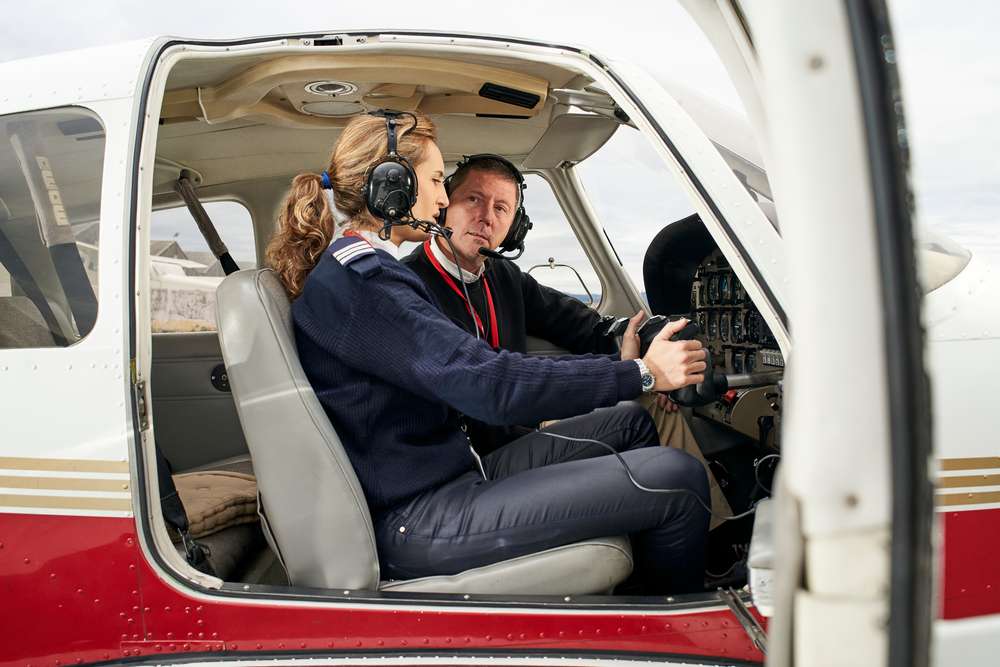Flight Training Guide: From Beginner to Airline Pilot
Discover the essential steps of aviation training—from your first introductory flight to advanced airline certifications. This comprehensive guide covers training timelines, common training aircraft, cost estimates, and financing options for aspiring pilots. Learn what to expect and how to plan your path to a pilot license, instrument and multi-engine ratings, or a professional airline career.

Flight training begins once students have grasped the classroom basics and are ready to take the controls. Initial flights give new pilots supervised, hands-on experience with a certified flight instructor at the controls. These early lessons are vital for learning basic aircraft handling, developing cockpit discipline, and building confidence before solo flights.
Typical training timeline
How long training takes depends on the certificate sought, how often a student flies, and personal aptitude. For many enthusiasts the Private Pilot License (PPL) is the first milestone. With consistent study and frequent flying, a typical PPL can be completed in roughly 3 to 6 months.
Professional-level credentials require more flight hours and deeper instruction. A Commercial Pilot License (CPL) and instrument qualifications take substantially longer, while the Airline Transport Pilot License (ATPL) requires the most experience. Depending on resources and commitment, progressing from PPL to ATPL can require several months to several years.
Training aircraft and simulators
Most flight schools introduce students to small, single-engine trainers that are easy to handle and forgiving for beginners. Common models include the Cessna 152 and 172, Piper Cherokee family, and the Diamond DA20. These aircraft usually have dual controls so an instructor can demonstrate techniques and intervene when needed.
As pilots advance, they often transition to more complex aircraft, including multi-engine airplanes, to prepare for higher-level ratings. Flight simulators are widely used alongside real flight time; they offer a cost-effective, safe environment to rehearse instrument procedures, emergency scenarios, and cockpit flows.
Certifications and ratings
Aviation training offers several distinct certifications to match different goals:
-
Private Pilot License (PPL): Authorizes recreational flying and carrying passengers but not compensation.
-
Commercial Pilot License (CPL): Enables pilots to be compensated for their flying services and is a stepping stone toward professional roles.
-
Airline Transport Pilot License (ATPL): The highest pilot certificate, required to serve as captain on major airliners.
-
Instrument Rating: An add-on that permits operation under instrument flight rules (IFR), allowing flight in low visibility using cockpit instruments.
-
Multi-Engine Rating: Certifies a pilot to operate aircraft with more than one engine, a necessary qualification for many commercial careers.
Each credential builds on the previous one, with specific flight-hour minimums, exams, and practical checks.
Typical costs
Training expenses can vary widely based on location, the flight school, aircraft rental rates, and how quickly a student completes the program. Below is a general cost summary often cited for United States training paths:
| Certification | Estimated Cost Range | Training Hours (Approx.) |
|---|---|---|
| Private Pilot License | $10,000 - $15,000 | 60-75 hours |
| Commercial Pilot License | $30,000 - $50,000 | 250 hours |
| Airline Transport Pilot License | $70,000 - $120,000 | 1,500 hours |
| Instrument Rating | $8,000 - $12,000 | 40-50 hours |
| Multi-Engine Rating | $5,000 - $7,000 | 10-15 hours |
Prices, rates, or cost estimates mentioned in this article are based on current information and may change over time. Independent research is advised before making financial decisions.
These figures typically include aircraft rental, instructional time, ground school materials, and exam fees. Additional costs to plan for include medical examinations, headsets and navigation equipment, testing fees, and potential living expenses during training.
Financing and support options
Because flight training can be expensive, many students explore financing strategies. Common approaches include:
- Flight school financing: Some schools provide payment plans or partner with lenders experienced in aviation education.
- Scholarships and grants: Organizations such as the Aircraft Owners and Pilots Association (AOPA) and the Experimental Aircraft Association (EAA) offer scholarships for qualified applicants.
- Military programs: Serving in the armed forces is an alternative route that can provide flight training with limited out-of-pocket cost.
- Work-study and part-time aviation jobs: Flight schools sometimes hire students for maintenance, dispatch, or instruction assistant roles in exchange for reduced training costs.
- Traditional student loans: When training is part of an accredited degree, students may qualify for federal or private education loans.
Combining multiple funding sources is common, and early planning helps manage the financial burden.
What to expect during training
Expect a mix of ground instruction and hands-on flying. Ground school covers aerodynamics, navigation, meteorology, regulations, and aircraft systems. Flight lessons focus on takeoffs, landings, climbs, descents, navigation, emergency procedures, and instrument flying as appropriate to the rating.
Regular practice, both in the aircraft and with study materials, accelerates progress. Many students benefit from a structured curriculum and predictable flight schedules to maintain momentum and minimize knowledge fade between lessons.
Final thoughts
Aviation training is demanding but highly rewarding. Whether your aim is recreational flying or a career as an airline pilot, understanding the steps, timelines, aircraft types, and costs will help you plan effectively. With persistence, the right resources, and careful budgeting, the journey from that first supervised flight to advanced certifications can lead to a fulfilling career in the skies.






